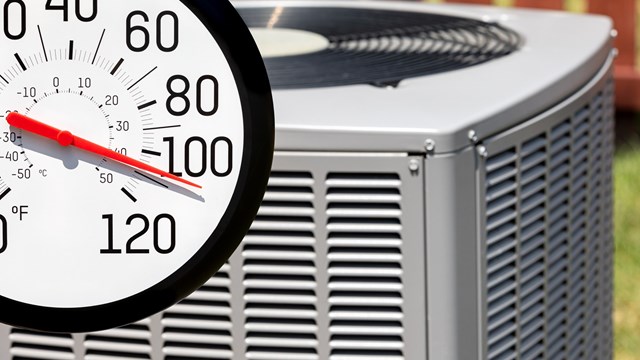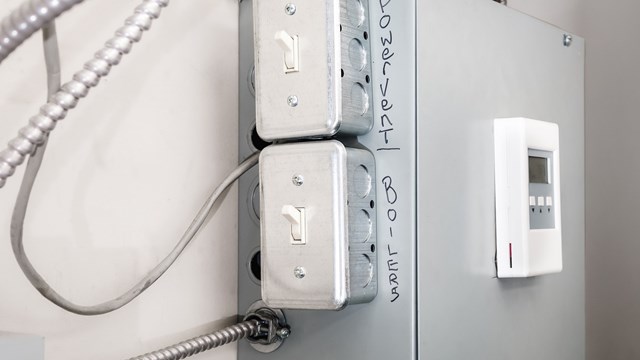When you live in a multifamily building with possibly hundreds of people residing under one roof, cooking, cleaning, dusting, and breathing, it’s no surprise that the airways, chutes, and garbage rooms can get clogged and dirty over time, potentially leading to some serious problems.
“According to the U.S. Environmental Protection Agency (EPA), the levels of some hazardous pollutants in indoor air have been found to be up to 70 times greater than in outdoor air,” says Philip B. Renzi, executive vice president of Environmental Services for the Canton, Massachusetts-based AirCare Environmental Services Division of SynergyOne Solutions, Inc. “The decrease in air ventilation results in condo residents breathing bad air.”
This is especially true heading into the colder months, with doors and windows being locked up tight and the air re-circulating throughout the condo. Waste material, debris, and allergens can build up in a building’s airways and passages and the duct system eventually becomes the perfect environment for the proliferation of mold, bacteria, and other organisms.
“A major source of indoor air pollution in condos is having dirty air ducts,” says Michael Vinick, president of Duct and Vent Cleaning of America, who also serves on the board of directors of the National Air Duct Cleaners Association (NADCA), the heating, ventilation and air conditioning (HVAC) inspection, maintenance and restoration association. “Each time the furnace or air conditioner is in operation, dust, dirt particles, debris, pollen, pet dander and other pollutants are drawn into the duct system. Over time, the particles accumulate in the ducts.”
When there is improper air ventilation, the indoor air becomes contaminated with air pollutants. To maintain the environmental health of a building, it’s vital that the HVAC system, garbage chutes and collection areas, and other circulatory systems remain clean, sanitary and stench-free.
Staying on Top of Things
In addition to normal accumulations of dust and dirt found in all homes through regular use, there are several other factors that can increase the need for air duct cleaning.
“You may be living in a complex where down the street they are doing road construction or building a new store, and all the debris gets airborne and it could end up in your living environment,” Vinick says. “The migration of ambient air matters a great deal.”
Other contributors include pets; occupants with allergies or asthma; cigarette or cigar smoke; water contamination or damage to the home; problems with the HVAC system; and home renovation or remodeling projects.
“Some occupants are more sensitive to these contaminants than others,” Renzi says. “Allergy and asthma sufferers, as well as young children and the elderly, tend to be more susceptible to the types of poor indoor air quality that air duct cleaning can help to address.”
When infants are exposed to mold in a home, their risk for developing asthma more than doubles, according to a study published by the Annals of Allergy, Asthma & Immunology.
“The study doesn’t prove mold causes asthma but it does suggest that exposure to mold during infancy is linked to the development of chronic inflammation of the lung airways, which causes wheezing, shortness of breath, chest tightness, and coughing,” Renzi says.
It’s the job of any good management company to be aware of any possible problems and maintain service contracts with reputable companies so there is no guesswork or scrambling if a problem arises.
“Typically on an association, you do a year contract where they come in and service the heating and cooling system on a quarterly basis, or on season switching into the winter and spring, depending on size and use,” says Keith Shirley, president of Meridian Realty Group in Boston, which manages 400 units in 20 buildings. “For the duct cleaning, it is done on an as-needed basis through visual inspection several times when servicing the heating and cooling systems.”
Cleaning Process
Since condominiums are all designed differently, sometimes the ductwork is closed and very difficult to access, while other times the ducts are very accessible, so the cleaning methods are going to vary.
Typically the ducts are made of sheet metal but in the ’70s, a lot of New England condos put in fiberboard, which needs to be cleaned a whole different way.
“If you’re doing multiple units, you are going to want to have someone come in and spec out the job to look at the system and give you a fair price, because it’s a package deal on the condo,” Vinick says. “Ducts should be cleaned at least every three years and depending on its size and accessibility, the price range can be anywhere from $500 to several thousand dollars.”
An air duct cleaning involves the cleaning of the interior of the ventilating and heating system along with all the return air grills or registers, even an air conditioning pump that is coiled inside it. Professionals providing services related to the cleaning of the air duct also use a disinfectant to remove all sorts of mold, dust, and bacteria from the air ducts.
The process for the cleaning involves an air-handling system placed under negative pressure using high-powered, high efficiency particulate air (HEPA) filtered collection vacuum units.
“We then utilize source removal techniques that include manual and automated brushing, air whipping and the use of compressed air to agitate and lift dust and other debris within the air handling system, which is then drawn into the HEPA-filtered vacuum units,” Renzi says. “Once the air duct or vent is cleaned of all dust and debris, the entire system is then sanitized to eliminate any bacterial or microbial growth using an EPA-approved disinfectant.”
Clean, efficient systems are less likely to break down, will have a longer life span, and generally operate more effectively than dirty systems.
“Plus, the energy savings can be significant and it affects the living environment,” Vinick says. “You need to make sure your filter is changed regularly and your cooling coils are clean and your duct work is clean—and that can add up to altogether 20 percent more energy savings.”
Out with the Trash
Another area that needs to be addressed in a condo is trash chutes. Over time, trash chutes can become coated and clogged with grease, dirt and debris and the build-up can lead to odors, bacterial growth, insect infestations and vermin.
“Cleaning trash chutes is necessary because it is a bacteria and odor issue,” Renzi says. “They should be cleaned annually, or in some cases we clean them quarterly if they are used a great deal.”
The process involves treating the chute’s surfaces with a biodegradable, deodorizing enzyme chemical to soften and loosen the greasy build-up, which is then removed by a high temperature pressure wash. The chemical solution is flushed down the drain, cleaning as it flows.
Dryer Do’s and Don’ts
An even more important duct/vent issue for condominiums to keep in mind as winter approaches is dealing with dryer vents. Routine exhaust cleanings are not only important in maintaining your exhaust system’s performance and efficiency, but are also critical for fire prevention.
“When in use, kitchen hoods and laundry dryers produce a tremendous amount of heat, which must be vented outdoors to keep the systems cool,” Renzi says. “When a kitchen, bathroom or dryer vent becomes clogged, the heat gets trapped within the ductwork and can potentially ignite the debris inside—resulting in a devastating fire. Approximately 15,000 house fires a year are caused from dirty dryer exhaust vents.”
In addition to fires, dryer vents can be responsible for other health issues and use more energy.
“There is always the potential for poor air quality or mold build-up in dryer exhaust systems that water is building up caused by natural condensation (hot-to-cold) during use. But when a system is clogged up and not venting properly there may be water build-up as a result of the normal drying cycle,” says Gary M. Marino of Dryer Vent Wizard of Danbury, Connecticut. “Your dryer is working longer and harder, therefore less efficiently, consuming more electricity or natural gas for continued use.”
Industry experts recommend that your dryer exhaust system should be inspected and/or cleaned annually. The initial process typically takes about 25 minutes per unit, beginning with a visual observation of the dryer exhaust system starting with the dryer and ending at the termination point.
“Upon completing this review the exhaust system is put under pressure and an anemometer and manometer reading are performed to determine approximate airflow and/or pressure build-ups in the system,” Marino says. “Low air flow may indicate a clogged system as well as a damaged system whereby older or non-metallic materials have constricted and may have torn or cracked in the interior of the home, or where metallic components may have come apart during cleaning processes caused usually by poorly constructed systems or duct-taped seams. In some cases metallic components had not been sealed at all.”
Dryer vent cleaning is not an exact science—primarily because most professionals do not know the condition of dryer exhaust materials, the actual length or access points to properly clean the pipes. But most cleanouts range from $75 to $175 per unit.
“The dryer vent exhaust system is probably the last thing individuals think about, either in the home where they live or plan to purchase or sell,” Marino says. “But yet there are on average over 15,000 fires related to dryer/dryer exhaust systems annually, or about one fire every hour and forty minutes.”
Final Thoughts
It’s easy to forget or overlook issues that may not necessarily be visible to the naked eye, and for that reason, something like indoor air quality often doesn’t register as a priority until it becomes a problem.
Remember, when air quality doesn’t get the priority it deserves, it can lead to trouble.
Keith Loria is a freelance writer and a frequent contributor to New England Condominium.










Leave a Comment